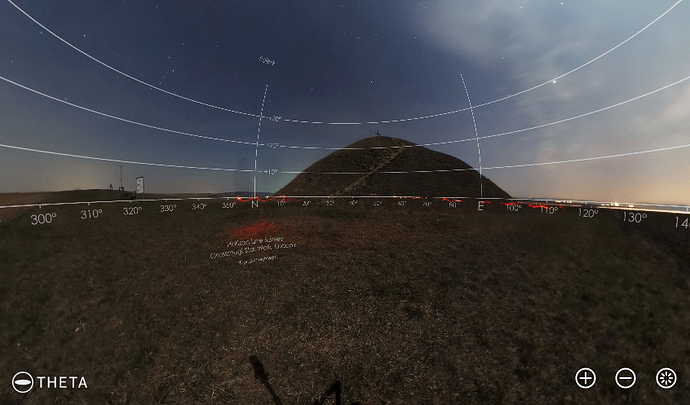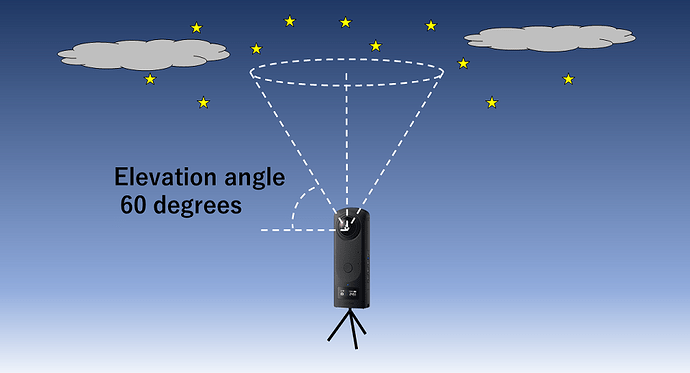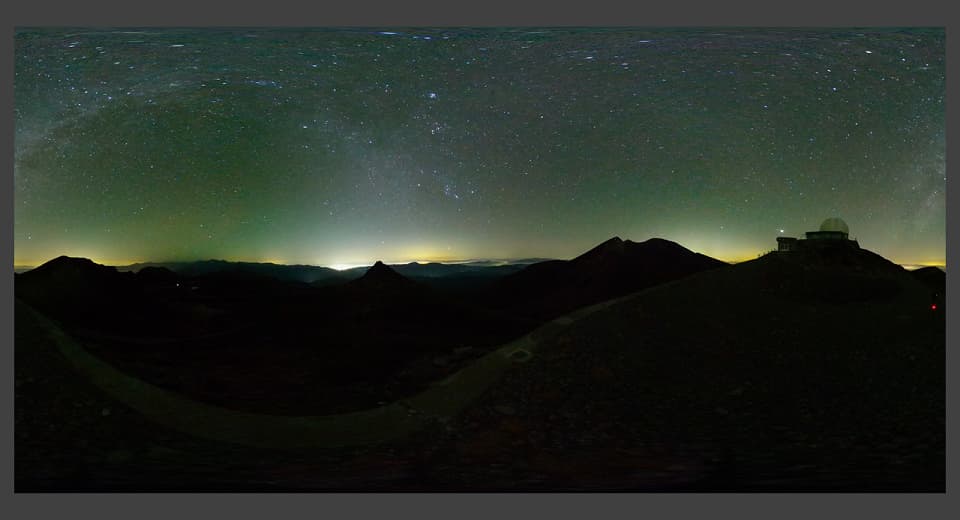I just ran into a fantastic site called Project Nightflight, “dedicated to the beauty of the night sky.” Project Nightflight promotes the conservation of the starry sky as environmental resource. They work with international media organizations to provide:
- High resolution images of the unspoiled night sky
- Catching stories about the magic of the starry sky
- Useful tips for stargazing and astrophotography
- Informative articles on light pollution prevention
Under the Test menu, which lists lots of interesting projects, there’s a page on the Ricoh Theta S in Astronomy.
This site is incredible!
From the Ricoh Theta S in Astronomy page:
We tested the Theta S for astronomical usage and it turned out quite well. Whether you want to shoot fun pictures at a star party, record an observing event, capture extended celestial scenes, survey observing sites or document light pollution, the Ricoh Theta S is a great investment. Our experiments showed that this little cam will be a very valuable tool for a multitude of applications in astronomy and astrophotography. Read the full PDF article about the Theta S in astronomy and astrophotograhy, which is available for free download.
I highly recommend downloading the PDF and reading through the paper by Erwin Matys and Karoline Mrazek, founding members of Project Nightflight.
The paper covers Night Sky Suitability of the Theta S, and Matys and Mrazek only used the mobile app to control the THETA. It then goes into Simple Astronomical Applications for the Theta S, including twilight phenomena, auroras, noctilucent clouds, total solar eclipses, solar and lunar halos, constellations, planetary conjunctions, fireballs and the brighter parts of the Milky Way. It also covers Aligning the Images so a THETA can be used for measuring azimuth and elevation angles of objects in the images.
The images must be recorded with the camera aligned in the horizontal system. Meaning, the mathematical horizon of the imaged scene must appear as a straight horizontal line crossing the equirectangular image exactly in its middle. This is never the case when the vertical alignment of the camera is done by simple eyeballing.
So they built a custom rig to handle this, and claim it is possible to measure horizontal coordinates of objects on the images to an accuracy of ±0.5°.
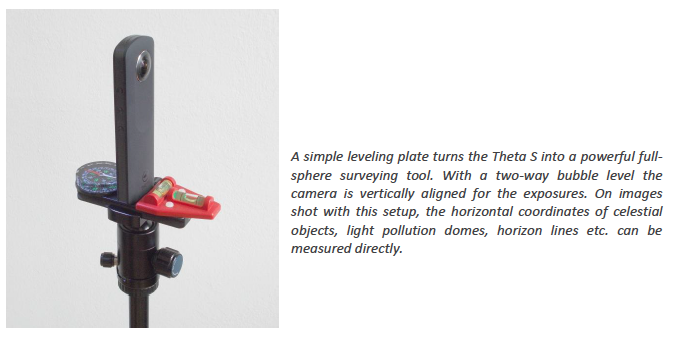
They also cover Surveying an Observing Site’s Horizon. This is to help astronomers prep for upcoming observations. It’s helpful to make panoramas of favorite observing locations by carefully photographing the horizon in several images and stitching them together.
This has never been done frequently, because until now the process to produce such a panorama took hours. With the Theta S this changed dramatically.
The same technique is used in the Documenting Light Pollution at an Observing Site section. This is a key part of the mission of Project NightFlight, and it’s cool to see RICOH THETA being helpful. Finally, the paper covers Shooting the Milky Way Galaxy.
Under a dark sky, exposures of 60 seconds easily capture the Milky Way or the zodiacal light. However, since these objects require settings of ISO 800 or higher, the images turn out somewhat noisy. To get rid of the unwanted noise, it is possible to shoot several images and later combine them with a stacking software. During the imaging sequence the Theta S has to be tracked for the sky’s motion, otherwise the equirectangular images cannot be stacked properly. For tracking the Theta S, any motorized equatorial mount or sky tracking device will suffice. Simply mount the camera piggyback on your telescope or on your sky tracker and use the Theta app’s interval timer to expose a sequence of images. When using ISO 800 we recommend shooting at least 16 individual images. These are imported later into a stacking software like Deep Sky Stacker and combined to a single noise-free picture.
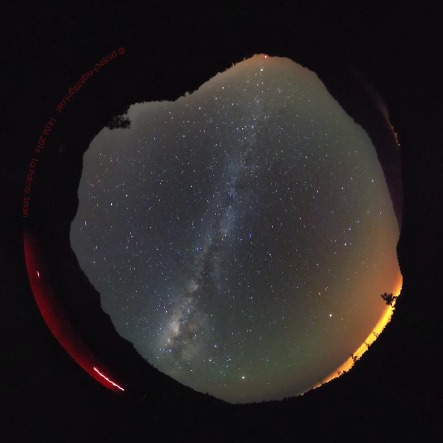
This is an exquisite site with an admirable mission. If you’re thinking of using the RICOH THETA for astronomy, I suggest starting with Project Nightflight!

